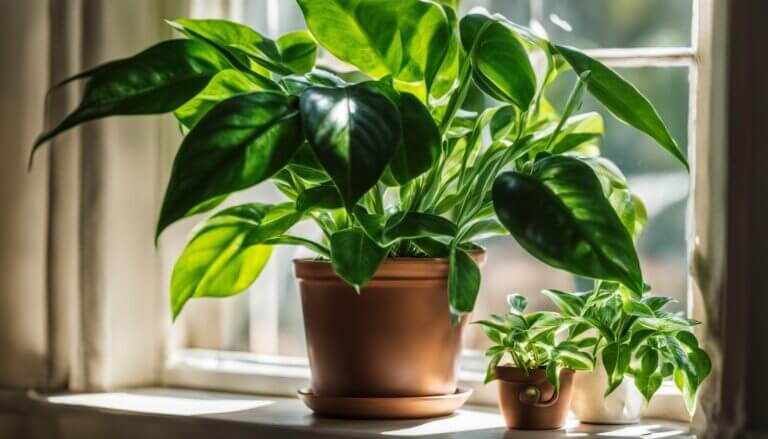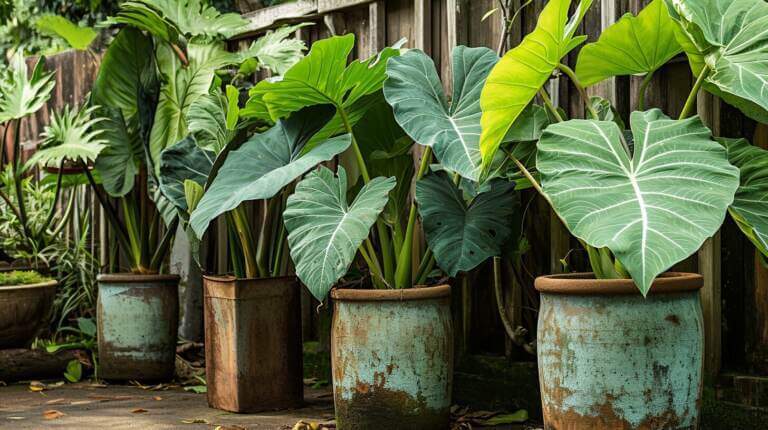Monsteras, also known as Swiss cheese plants, are tropical vines that naturally develop holes in their leaves through a process called leaf fenestration. The purpose of these holes has been a topic of debate among plant experts. Some theories suggest that the holes allow wind to pass through the leaves or aid in capturing water, while others propose that they enhance the plant’s ability to capture sunlight. However, the leading theory suggests that the holes are a result of the lighting conditions in their natural habitat. Monsteras grow from the forest floor and rely on small beams of sunlight, known as sunflecks, that make it through the canopy. The holes in the leaves increase the leaf’s surface area, allowing for a higher chance of capturing sunflecks and maximizing photosynthesis. By understanding when and why holes form in monstera leaves, you can provide optimal care for your plant and promote healthy growth.
Key Takeaways:
- Monstera leaves naturally develop holes through the process of leaf fenestration.
- The holes in the leaves increase the leaf’s surface area and optimize photosynthesis.
- Holes are a result of the lighting conditions in their natural habitat.
- Proper care, including adequate lighting and trimming older leaves, can promote healthy hole development.
- Understanding when and why holes form in monstera leaves helps in providing optimal care for your plant.
The Fenestration Process in Monstera Leaves
The fenestration process in monstera leaves is a fascinating natural phenomenon that occurs as the plant matures. When young, monsteras have heart-shaped green leaves similar to other aroids. However, as the plant reaches a height of about three feet, fenestration starts to occur. This means that new leaves will have holes and a distinct, perforated appearance.
The fenestration process is closely tied to the leaf morphology, or shape, of the monstera plant. As the plant ages, its leaves undergo a transformation, developing larger sizes and more intricate patterns of holes. These holes are not randomly formed but follow a specific arrangement that enhances the plant’s ability to capture sunlight in low light conditions.
https://www.youtube.com/watch?v=fwNarUoHx-Q
It’s important to note that once the leaves develop, they will not change or develop new holes. This means that the fenestration process occurs during the growth phase of the leaves and is not an ongoing process. To encourage fenestration in your monstera plant, it’s crucial to provide it with adequate lighting and create an environment that mimics its natural habitat. Additionally, trimming off older, smaller leaves can stimulate the growth of larger, more fenestrated leaves.
| Leaf Morphology | Fenestration Level |
|---|---|
| Young, heart-shaped leaves | No fenestration |
| Mature leaves | Distinct fenestration with intricate hole patterns |
Age of the Plant and Fenestration
The age of the plant plays a crucial role in the fenestration process. Younger monstera plants will have fewer fenestrations, if any, as they are still in the early stages of leaf development. As the plant grows and matures, the leaves will gradually develop more holes, resulting in a more fenestrated appearance. This is a natural adaptation that helps the plant capture sunlight in low light conditions, maximizing its photosynthetic efficiency.
In summary, the fenestration process in monstera leaves is a remarkable adaptation that occurs as the plant matures. By understanding the factors that influence hole formation and providing optimal care, you can promote the development of healthy fenestrated leaves in your monstera plant. Remember to ensure adequate lighting, encourage leaf growth through trimming, and create an environment that mimics the plant’s natural habitat.
Factors Affecting Hole Formation in Monstera Leaves
When it comes to the formation of holes in monstera leaves, several factors come into play. One of the main influencers is the lighting conditions in which the plant is grown. Monsteras, native to tropical rainforests, have evolved to adapt to low light levels by developing fenestrated leaves. These holes allow the plant to capture small beams of sunlight known as sunflecks, maximizing photosynthesis.
Another factor that affects hole formation is water availability. While the presence of holes in the leaves may aid in water absorption, monstera plants are native to rainforests where water is abundant. Therefore, the holes are not a necessity for their survival but rather an adaptation to their natural habitat.
The growth rate of the plant also plays a role in hole formation. As monsteras grow more quickly, it becomes advantageous for them to have fenestrated leaves to enhance their ability to capture available sunlight. The holes increase the leaf’s surface area, allowing for a higher chance of capturing sunflecks and maximizing photosynthesis.
Factors Affecting Hole Formation:
- Light conditions
- Water availability
- Growth rate
- Plant adaptation
Understanding the factors that affect hole formation in monstera leaves is crucial for providing optimal care for your plant. By ensuring adequate lighting and water availability, as well as promoting healthy growth, you can encourage the development of beautiful and fenestrated leaves. In the next section, I will provide tips on how to promote healthy hole development in your monstera leaves.
| Factors | Affect on Hole Formation |
|---|---|
| Light conditions | Influences the development of fenestrations in the leaves |
| Water availability | Not a necessity for hole formation but can impact overall plant health |
| Growth rate | Faster growth promotes the development of fenestrated leaves |
| Plant adaptation | Holes in leaves are an adaptation to low light levels in their natural habitat |
Promoting Healthy Hole Development in Monstera Leaves
To ensure your monstera develops healthy holes in its leaves, proper care is essential. Monstera care involves providing the right lighting conditions and maintaining mature leaves, while also incorporating regular leaf trimming.
First and foremost, it is crucial to provide your monstera with indirect light. Direct sunlight can be too intense and may result in leaf scorching, which can hinder hole development. Place your plant in an area with bright, filtered light to encourage optimal growth.
In addition to lighting conditions, the practice of leaf trimming can play a significant role in promoting hole development. By removing older, smaller leaves, you allow the plant to focus its energy on producing larger leaves with more fenestrations. This selective trimming stimulates new growth and increases the likelihood of developing beautiful holes in your monstera leaves.
It’s important to note that the holes in monstera leaves will only develop in mature leaves. As new leaves emerge, they will initially be solid and unperforated. Be patient with your monstera’s growth process, and over time, you will see the desired fenestrations in the mature leaves.
FAQ
What are monsteras?
Monsteras, also known as Swiss cheese plants, are tropical vines that naturally develop holes in their leaves through a process called leaf fenestration.
Why do monsteras have holes in their leaves?
The purpose of the holes in monstera leaves has been a topic of debate among plant experts. The leading theory suggests that the holes are a result of the lighting conditions in their natural habitat, allowing for a higher chance of capturing small beams of sunlight.
When do holes form in monstera leaves?
The fenestration process in monstera leaves begins as the plant matures. When young, monsteras have heart-shaped green leaves, but as the plant grows taller, fenestration starts to occur, resulting in leaves with distinct holes.
Can the holes in monstera leaves develop or change over time?
Once the leaves develop, they will not change or develop new holes. The holes are a natural adaptation that occurs as the plant matures to help it capture sunlight in low light conditions.
What factors influence hole formation in monstera leaves?
The formation of holes in monstera leaves is influenced by the lighting conditions, water availability, and the growth rate of the plant.
How can I promote healthy hole development in my monstera leaves?
To ensure your monstera develops healthy holes in its leaves, provide it with indirect light, trim off older, smaller leaves, and allow the plant to grow and age naturally.







